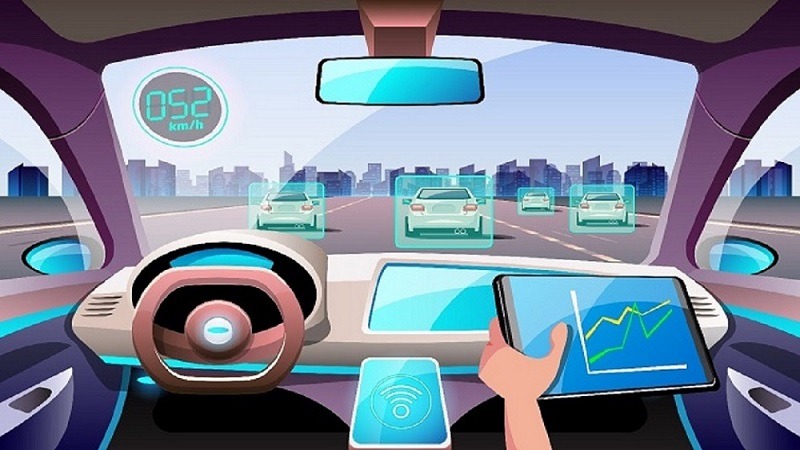The Role of AI Help Climate Change Solutions
How can technology help us look after the environment better? Well, one method involves using artificial intelligence (AI). This means using clever computer programs that are good at looking at a lot of information fast.
AI helps monitor forests to prevent deforestation and land being cleared. It warns us about big storms and droughts before they happen.
AI helps farmers learn how to grow food without harming the planet.
AI tracks pollution levels across large areas. It studies animals and plants to identify endangered species that need protection.
AI even educates people on habits like reducing waste. Scientists use AI to accelerate environmental research too.
Let us look at How AI can help combat climate change and how Public Environmental Agencies are using AI to combat climate change.
1) Tracking Deforestation
![]()
Forests offer shelter to wildlife and are key in taking in carbon dioxide from our atmosphere.
This is a gas that causes climate change. Cutting down too many trees is bad. It is called deforestation.
Public agencies need to watch forests carefully. They want to know if deforestation is happening.
Checking every single forest is hard work. It would take a long time for people to do this job.
This is where artificial intelligence can help. AI can quickly look at many satellite pictures from space. The satellite pictures show what forests look like from above.
The AI software can detect changes in the satellite pictures over time. It can see if parts of a forest have disappeared.
This could mean trees were cut down in that area. The AI can calculate exactly how much forest was lost.
Agencies get reports from the AI about deforestation. They can then make decisions to protect forests.
Maybe they will make new rules about cutting trees. Or they could start re-planting trees in damaged areas.
Monitoring land use changes is also important for the environment.
Clearing land for farms, towns or industries impacts nature. AI can analyze satellite data to track these changes too. It provides valuable insights for agencies.
Public environmental agencies are leveraging how AI can help combat climate change through advanced predictive modeling and analysis.
2) Forecasting Extreme Weather Events
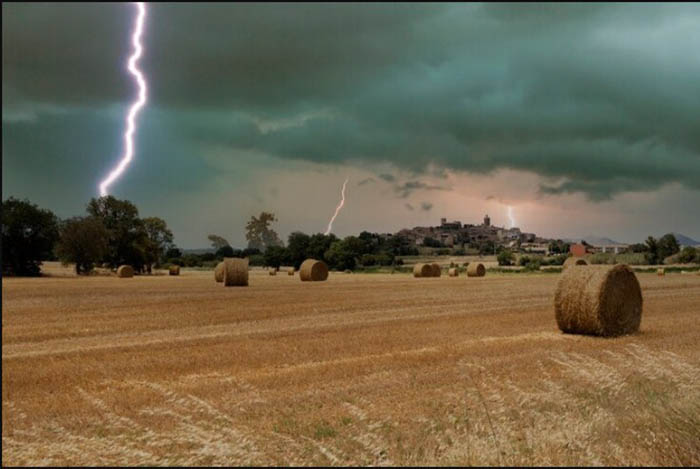
The weather seemed to be becoming harsher recently. There are stronger storms, severe droughts, wildfires, and other unexpected weather patterns.
One of the key causes is climate change, which is caused by human activities.
The capacity to predict when and where severe weather may occur is crucial.
Public environmental agencies are increasingly turning to AI climate tools to analyze vast amounts of data on weather patterns, carbon emissions, and environmental changes.
It allows agencies to prepare and warn people ahead of time. AI technology is proving very useful for weather forecasting.
Normal weather prediction looks at current conditions like temperature, humidity, wind speed, etc. AI can also analyze huge amounts of past weather data. It finds patterns that human experts may miss.
Complex AI software can create detailed models of the climate system.
It considers millions of environmental factors simultaneously. This leads to more accurate extreme weather predictions.
Drought is another climate threat that AI can help predict. It analyzes data like rainfall, soil moisture, temperature, and more.
AI can then identify the warning signs of drought conditions developing in certain areas months in advance.
Agencies use these AI climate tools in many ways. They can put emergency services on standby or they can advise people to stock up on supplies.
3) Enhancing Energy Efficiency
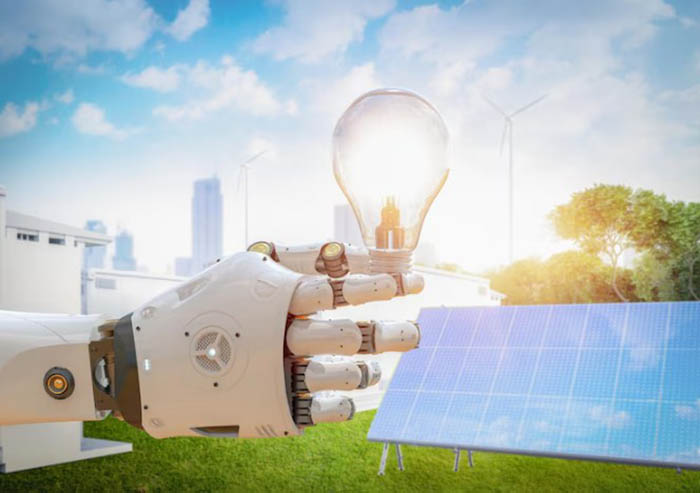
A lot of us still use things like oil, gas, and coal to power up pretty much everything. When we burn these fuels, they send out greenhouse gases into the air which isn’t great for our planet – it speeds up climate change.
- Increasing energy efficiency is an essential technique to reduce pollution.
- Public organizations are increasingly using AI technologies to improve energy consumption and eliminate waste.
- Imagine having a super-smart system that can manage heating, cooling off spaces, and even take care of lighting without anyone lifting a finger.
- This AI checks out how warm or cold it is inside, if there are people around using the space at certain times, and whether the air is clean enough to breathe well.
- The AI constantly adjusts these systems to maximize energy efficiency.
- Agencies use AI energy management for public buildings like schools, hospitals, or offices.
- Some cities also deploy AI-controlled smart grids to better manage energy at a larger scale.
- On smart grids, the AI coordinates energy supplies and demand across entire neighborhoods or cities.
- It decides the optimal times for storing energy or releasing it from sources like solar or wind farms. The goal is to cut energy waste while still meeting demands.
- AI virtual assistants can also interact with people to encourage energy-saving habits.
- The assistants provide personalized tips and feedback to reduce wasteful usage of lights, heating, electronics, etc.
- It’s not just big places like offices or city buildings getting this smart upgrade; even homes and businesses are getting in on the action too.
For example, Google Nest; is a smart thermostat that uses AI smarts to figure out when folks are home or away so it can heat or cool down rooms efficiently without wasting energy.
Moreover, Public environmental agencies are developing a Framework for Using AI in Combating Climate Change to streamline their initiatives and maximize their impact.
4) Tracking Pollution Levels
![]()
Humans damage our planet’s air, water, and soil. This pollution harms humans, animals, and plants. Cleaning up pollution and preventing more from occurring is critical for the ecosystem.
- Public agencies need to carefully monitor pollution levels across different areas. They need data on what kinds of pollutants are present and how much there is.
- Collecting this data can be difficult, expensive, and time-consuming with traditional methods.
- Artificial intelligence is allowing agencies to track pollution in new, smarter ways using AI climate tools.
- AI systems connected to sensor networks can continuously analyze air, water, and soil samples from many locations.
- The AI can identify pollutants like chemicals, particulate matter, microplastics, and more.
- AI pollution monitoring provides a very detailed picture of environmental conditions over time and across large regions.
- Agencies get constantly updated data maps showing concentrations of different pollutants based on the AI’s analyses.
- This information is invaluable for understanding pollution sources and spread.
- Agencies can use the AI data to create management plans to reduce pollution hotspots. They can also model how pollution may disperse under different weather patterns or circumstances.
- Making this worldwide pollution data accessible helps agencies collaborate to address pollution crossing national borders.
The AI insights enable targeted emissions reduction policies and smarter urban planning for cleaner air.
Implementing a Framework For Using AI in Combating Climate Change empowers agencies to harness the full potential of AI technology in their fight against climate change.
5) Biodiversity Management
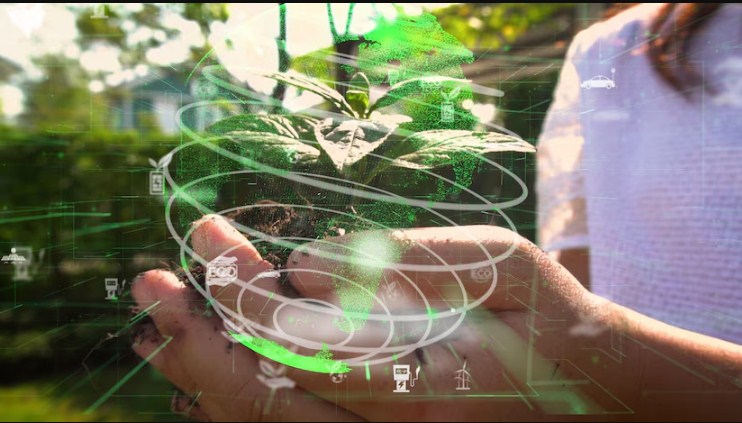
There are millions of different plant and animal species living on Earth. This is called biodiversity.
All these different animals and plants need each other, and the places they live, to stay alive.
But when people cut down too many trees, build too many buildings, make the air dirty, or hunt too much, it can cause lots of these living things to disappear forever very quickly.
If we lose all this variety in nature, it’s really bad for our Earth’s well-being.
Agencies are using artificial intelligence to better understand biodiversity.
AI can analyze huge biological datasets on species, genes, populations, and habitats. Finding patterns in this complex web of information is invaluable.
With AI biodiversity insights, agencies can identify species and ecosystems at greatest risk.
They can detect early warning signs of population declines or range losses. AI models can also map how climate changes may impact future biodiversity.
Agencies use this knowledge to prioritize conservation efforts and protection policies.
The AI data guides decisions on creating new protected areas, combating illegal wildlife trade, or restoring degraded habitats. It allows limited resources to be focused strategically.
Environmental agencies are leveraging AI to develop sustainable digital agriculture platforms, contributing to how AI can fight climate change.
The UN is employing AI to model how different climate scenarios and policy interventions may affect global biodiversity over the coming decades.
This guides international strategies to slow biodiversity loss and preserve crucial ecosystems.
As public environmental agencies continue to integrate AI into their operations, the potential for how AI can help combat climate change grows, offering hope for a more sustainable future.
6) Promoting Sustainability Habits
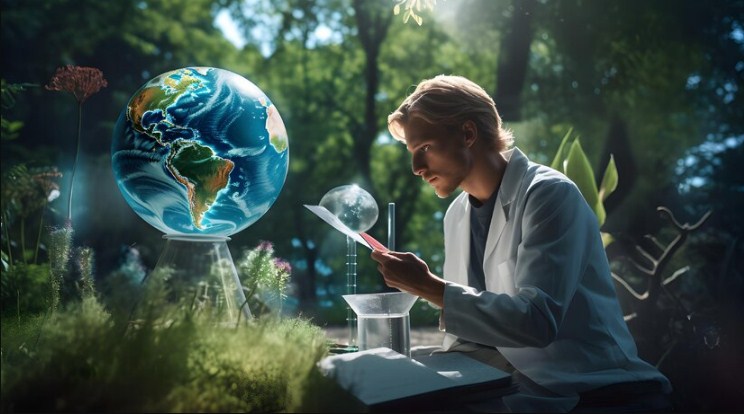
Public agencies can use laws, policies, and programs to encourage sustainable practices. However, real change requires cooperation from individuals, communities, and businesses as well.
Artificial intelligence is proving a valuable tool for agencies promoting sustainability habits among the general public.
Unlike one-way advertising, AI allows for personalized, interactive communication tailored to each person.
Simple AI chatbots can serve as virtual sustainability coaches. They can have friendly conversations, provide context-relevant advice, and answer questions.
Over time, the AI can learn someone’s specific circumstances and steer them toward small impactful changes.
For example, AI chatbots could suggest ways to reduce household food waste, recycle more effectively, or conserve energy and water for a particular family.
The AI draws from data about that household and positive social science insights on behavior change.
AI virtual assistants are another application for reinforcing green habits through friendly reminders and feedback based on personal data streams.
A smart home AI could praise lower energy usage or prompt more efficient lighting practices.
How AI can fight climate change is a pressing question for many environmental agencies.
On a larger scale, cities are experimenting with public AI displays that encourage sustainable transportation choices.
The public AI provides tailored multimodal trip planning, Carbon footprint calculations, and promotions for public transit and active transit like biking.
Overall, these personalized AI communication strategies aim to make sustainability feel more achievable while harnessing psychology, convenience, and incentives to reshape habits.
The friendly AI assistants can overcome feelings of helplessness and empower people as environmental changemakers.
Public environmental agencies are using AI to track pollution levels and mitigate environmental degradation, showcasing how AI can fight climate change.
7) Scientific Research Assistance

Understanding and addressing climate change requires immense scientific research across many disciplines.
From atmospheric science to renewable energy technology, biodiversity impact studies, and more, there is a vast trove of data to collect and analyze.
Public scientific agencies are increasingly employing AI to assist researchers in navigating this data deluge and accelerating the scientific process.
AI excels at tasks like identifying data patterns, generating analytical models, and testing hypotheses rapidly.
In climate science specifically, AI can help run high-resolution simulations of complex global systems like ocean currents, weather patterns, and carbon cycles.
These AI models enable more accurate predictive scenarios to inform policymaking.
For environmental researchers in fields like biology, ecology, and conservation, AI provides sophisticated analytical capabilities.
AI can process genomic, biosystem, and geospatial data in ways that augment human researchers’ efforts.
By harnessing the expertise of Generative AI Consulting Company, public agencies can optimize their resources and maximize the effectiveness of their environmental initiatives.
Conclusion
AI has a significant impact on environmental protection. By using AI, we get better at spotting problems and finding smart ways to fix them for the good of everyone.
What do you think about using AI to help the environment even more? Share your thoughts with us!
FAQs
1) Is it easy for all groups working on the environment to start using AI?
Yes, it’s becoming easier and cheaper for these groups, no matter their size or money situation, to use AI tools.
2) Can AI completely replace human efforts in environmental conservation?
No, AI complements human efforts but cannot replace them entirely. Human expertise, ethics of generative AI, and decision-making are crucial in guiding AI applications for environmental conservation.
3) What could go wrong with using AI for the environment?
There might be issues like people worrying about their personal information, unfairness in how AI makes decisions, and relying too much on AI without checking its work which could mess things up.
4) How can we all help with this kind of work?
We can live more environmentally friendly lives, push for clear rules about how AI is used, and join projects where regular people help collect information that helps AI learn.

